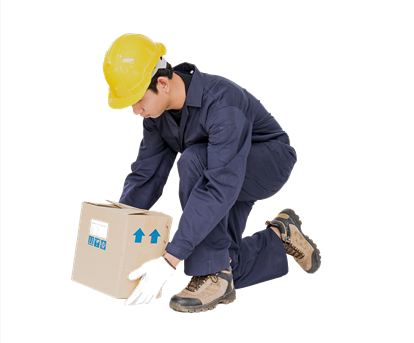Drag to resize
Materials Handling Safety
Drag to resize
Materials handling is an important, yet often overlooked, industrial system. It is the movement, protection, storage, and control of all materials and products inside and outside of facilities. The “material” in materials handling can refer to almost any physical thing and will vary greatly from industry to industry. While the “handling” aspect incorporates a wide range of manual or automated equipment and systems to move the materials around.
While materials handling is a crucial aspect of nearly any business operation, it can also be quite dangerous for employees. In fact, materials handling is one of the leading causes of work-related accidents and injuries in the United States today.
Every year thousands of back, hand, and arm injuries are attributed to the improper, manual lifting and carrying of heavy materials while on the job. While countless other injuries are reported from using automated material handling machinery to move and store items.
Because moving and storing materials can be so dangerous, it is important that workers have a strong understanding of potential hazards that can be present in their facility.
Some of the potential health hazards presented by materials handling and storage activities include:
Handling and Moving Hazards, such as:
- Lifting, lowering, pushing, pulling, or carrying loads that are too heavy or done too repetitively.
- Workers being hit by materials, caught between them, or in pinch points.
- Workers attempting to move materials while on a ladder, mobile ladder, or step stool.
Stacking & Storage Hazards, such as:
- Improperly stacked materials, or stacking materials too high.
- Damaged racking and storage units.
- Falling materials that were improperly stored.
Due to the high frequency of lifting required in materials handling – and the negative effects that improper lifting can have – it is crucial that workers understand the proper steps to safely lift materials.
When making a lift, workers should:
- Plan the Lift – First, stop and think about the situation. Assess the lift and make a plan for the lift depending on where, how long, and how complicated it will be.
- Check Pathways - Make sure that all pathways are clear and free of any tripping hazards or wet, slippery surfaces.
- Use Safe Lifting Techniques – Knowing how to properly lift will significantly reduce injuries.
- Get Help When Needed – Workers should never individually make a lift that requires the strength of multiple people.
- Wear the Proper PPE – Personal protective equipment can shield workers from hazards while lifting materials.
- Use Support Tools – Non-powered, manually operated transportation devices can be useful in certain situations.
Drag to resize
Drag to resize

